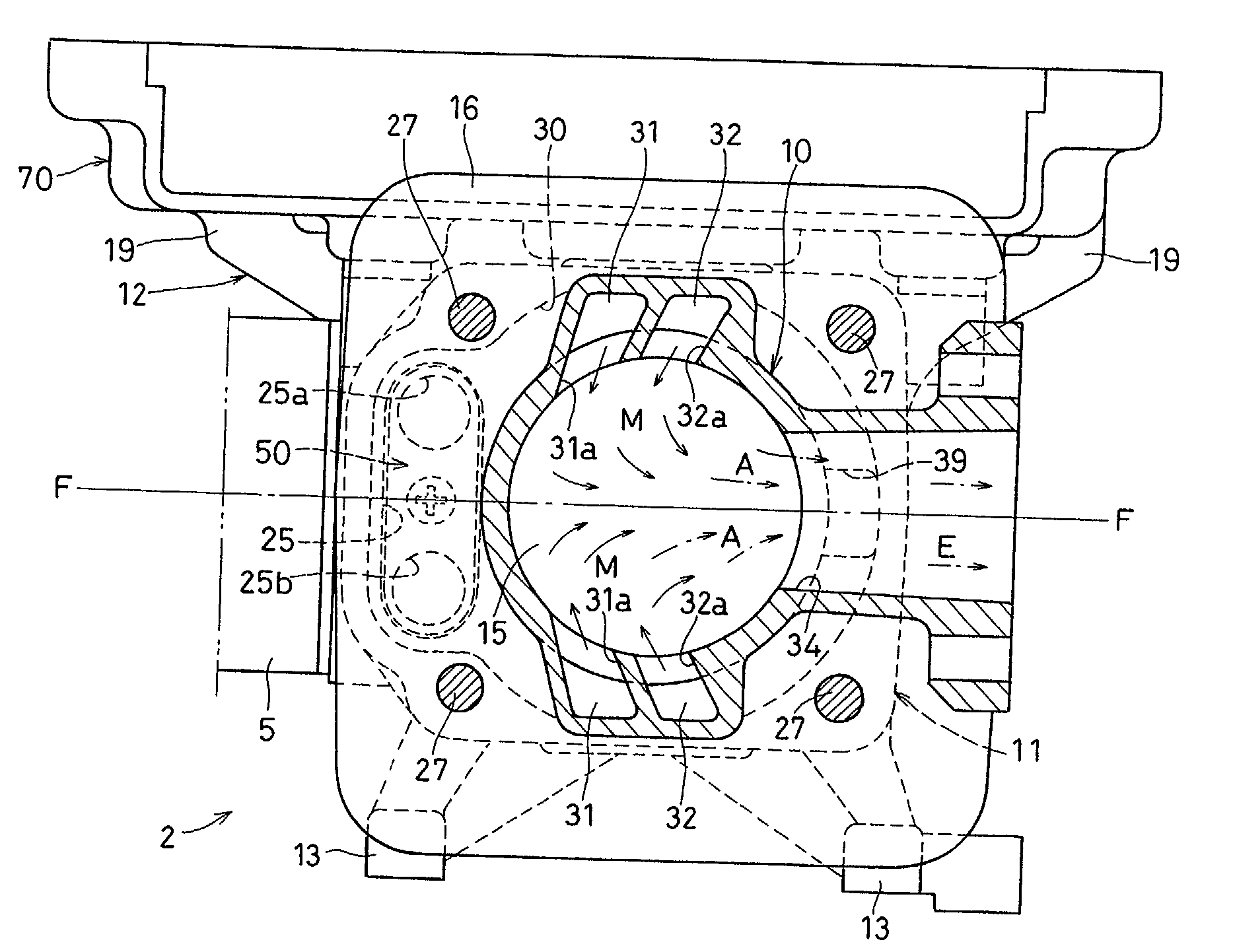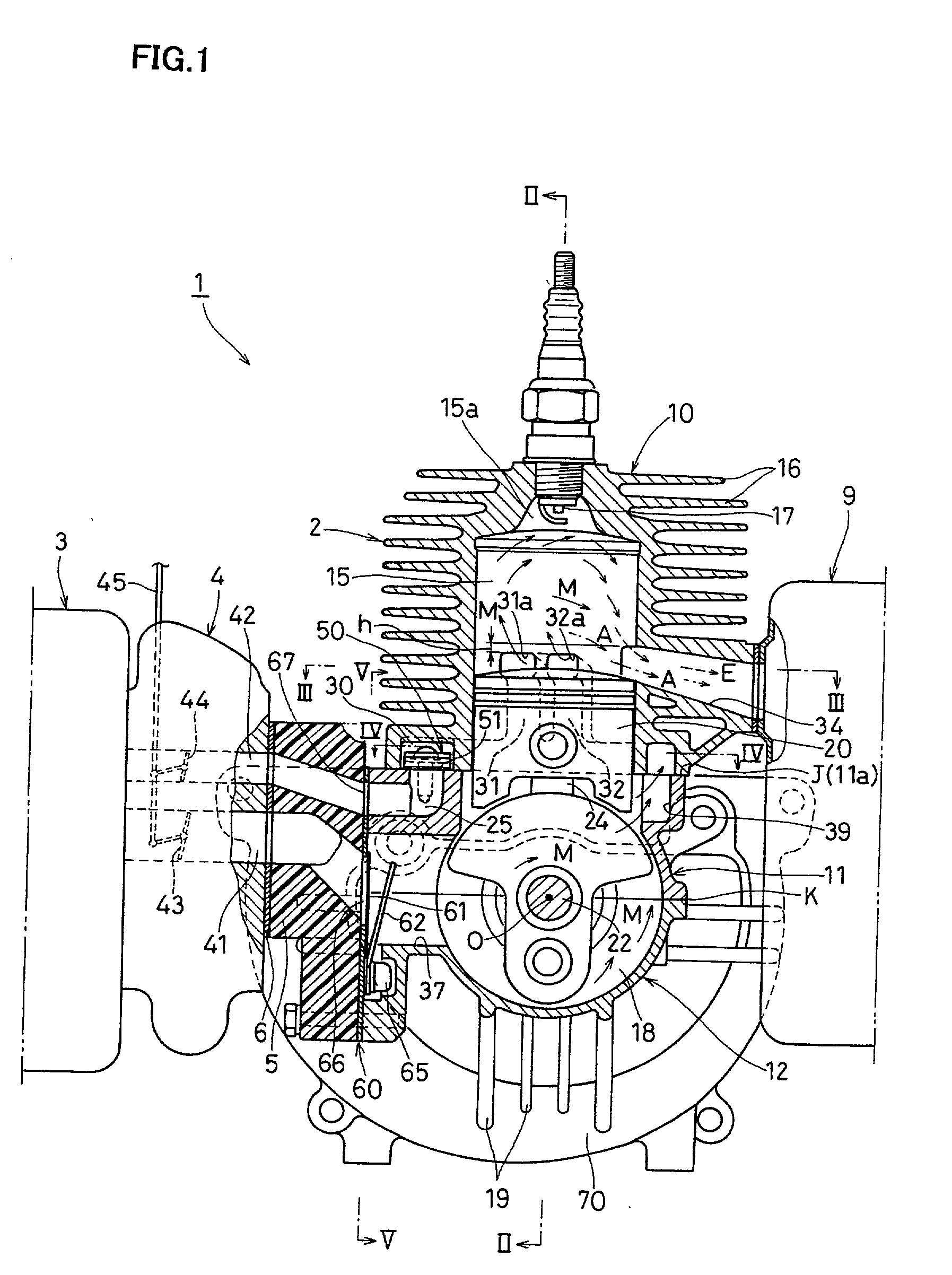Two-stroke internal combustion engine
a two-stroke, internal combustion engine technology, applied in the direction of machines/engines, mechanical equipment, cylinders, etc., can solve the problems of increased number of parts, not only in the influence of these poisonous components on environmental contamination, and insufficient control of fuel consumption
- Summary
- Abstract
- Description
- Claims
- Application Information
AI Technical Summary
Benefits of technology
Problems solved by technology
Method used
Image
Examples
Embodiment Construction
[0033] The present invention will be further explained with reference to the drawings depicting one embodiment of the two-stroke internal combustion engine according to the invention. For convenience of explanation, the left side of the line F-F in FIG. 2 illustrates a longitudinal sectional view sectioning a first scavenging port where the piston is positioned at bottom dead center, while the right side thereof illustrates a longitudinal sectional view sectioning a second scavenging port where the piston is positioned at top dead center.
[0034] In the embodiment shown in the drawings, the two-stroke internal combustion engine 1 is formed of a small air-cooled two-stroke gasoline engine, which is adapted to be employed in a portable working machine. The engine 1 comprises a cylinder 10 in which a piston 20 is fittingly inserted, and a crankcase of a horizontally split structure having an upper crankcase 11 and a lower crankcase 12. The crankcase is disposed below the cylinder 10 and ...
PUM
 Login to View More
Login to View More Abstract
Description
Claims
Application Information
 Login to View More
Login to View More - R&D
- Intellectual Property
- Life Sciences
- Materials
- Tech Scout
- Unparalleled Data Quality
- Higher Quality Content
- 60% Fewer Hallucinations
Browse by: Latest US Patents, China's latest patents, Technical Efficacy Thesaurus, Application Domain, Technology Topic, Popular Technical Reports.
© 2025 PatSnap. All rights reserved.Legal|Privacy policy|Modern Slavery Act Transparency Statement|Sitemap|About US| Contact US: help@patsnap.com



